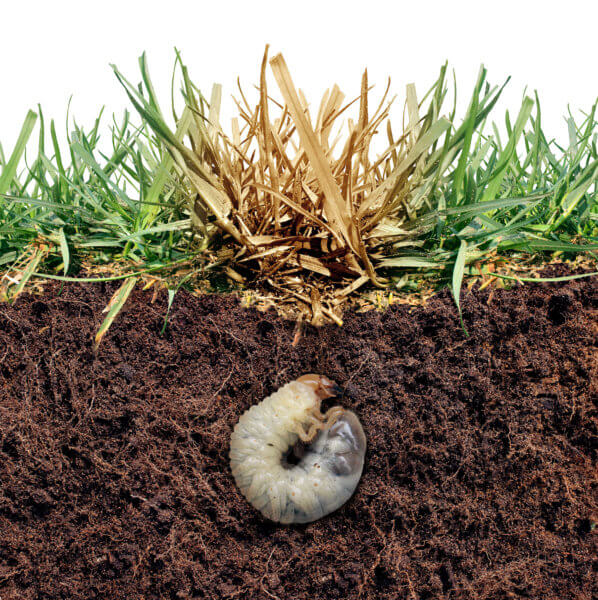
What’s Eating My Lawn? Common Lawn Pests in Florida
Caring for a lawn in Florida requires a lot of work, and it can be incredibly frustrating to watch your grass fall victim to lawn pests after all the labor you have put into it. Although Florida has a great climate for growing grass, there are a number of common lawn pests you’ll need to watch out for if you want to keep your grass as healthy as possible. Here’s what you need to know.
Chinch Bugs
St. Augustine is one of the most common grass types in Florida, but it is prone to getting chinch bugs. These tiny bugs can often go unnoticed until there is a major infestation, as you’ll typically need a magnifying glass to see them in your lawn. Chinch bugs feed on the blades of St. Augustine grass, leaving dry, bare patches that no amount of watering can restore. They tend to live close together, rather than spreading out across your lawn, so the bare patches are likely to be small and localized. You’ll need a professional extermination service to get rid of these bugs. After they are eradicated, use fertilizer to help your lawn recover or replace bare areas with fresh sod.
Grubs or Grub Worms
Grubs are the larval stage of a beetle’s lifespan. Here in Florida, most of the grubs that you are likely to find in your lawn come from either scarab beetles or June bugs, though there are a few other kinds that call the area home. Unlike chinch bugs, which prefer St. Augustine grass, grubs will take up residence in just about any type of grass. They feed on the root structure, effectively killing the grass above. In some cases, you may even be able to lift up the dead grass in a sheet like a rug, as there are no roots left underneath. You’ll need professional treatment to rid your lawn of grubs. If there is extensive damage, you’ll likely need new sod to replace the damaged areas.
Mole Crickets
Mole crickets are among the most destructive lawn pests out there, and they are especially common in Florida. They prefer Bermuda and Zoysia grasses, though you’ll often find them in St. Augustine as well. Like grubs, mole crickets burrow under your lawn, feeding on the roots. Their tunnels weaken the soil structure, making your lawn feel squishy when you walk over it. To get rid of mole crickets, you’ll need to lay bait in the late afternoon, then not water your lawn for two days afterwards. This treatment targets mole crickets in the nymph stage, essentially cutting off reproduction so the colony won’t continue to grow. It’s generally not possible for grass to recover from a mole cricket infestation, so fresh sod is likely to be your best bet to repair the damage.
Rodents
Voles, gophers and other small rodents often dig their burrows underground, which can cause significant damage to your lawn. In addition to raised tunnels under your grass, you may also find piles of mud near the entrances. These animals typically feed on grubs, crickets and other common lawn pests, which can be beneficial for your lawn. However, their negative effects outweigh the potential benefits, so you’ll want to get rid of them as quickly as possible before they have the chance to reproduce, which many of them do quite rapidly. Traps and bait can help stop these critters, though you may wish to work with a pest control company for the most effective results. Because rodents don’t directly harm the grass blades or your lawn’s root structure, the grass may be able to recover on its own with proper care and maintenance.
Bring Your Lawn Back to Health with New Sod
While your lawn may be able to recover after minor pest problems, larger infestations will often decimate your grass, leaving it unable to grow back. In cases of significant damage, fresh sod is a great way to restore damaged portions of your lawn quickly. Whether you need St. Augustine, Zoysia, Bahia, Floratam or any other Florida-friendly grass variety, Duda Sod has the sod you need. Our expert staff members can help you choose the best option for your needs, so contact us today to get started.